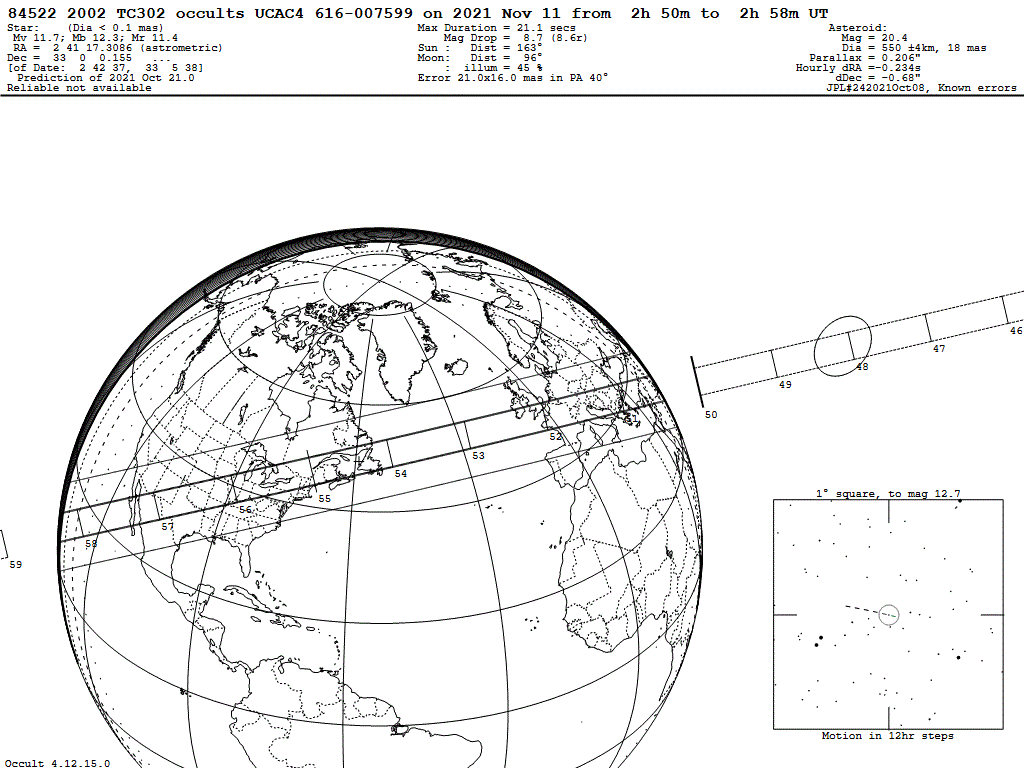
Map generated by Steve Preston
On the night of Nov 10/11, 2021, I attempted to observe an unusual event. In the far reaches of our Solar System are many asteroids and icy bodies, most of which are much too small and faint for us to detect. One of the larger ones, which we can see, is known as 2002 TC302. The orbit of this object has been observed carefully, and its track across the sky was predicted to intercept the position of a relatively bright star on this night. The result: a "shadow" of the asteroid, cast by the star, would slide across certain portions of the Earth. Observers under the shadow would see the star "blink out" for up to 21 seconds as the asteroid passed in front of it.
This calculation by Steve Preston shows the shadow passing directly over Rochester, at about Nov 11 02:56 UT = Nov 10 9:56 PM.

Map generated by
Steve Preston
Other calculations showed the path moving slightly to the south of us, but still within the formal uncertainties. Even if we didn't see the star disappear, a measurement from Rochester could help to set limits on the size and shape of this body.
So, I spent an hour or so setting up equipment:
In order to record the video in the most scientifically useful manner, I connected things in the following way: the video camera's signal was fed into the KIWI OSD unit, which receives GPS signals to compute the exact time of each video frame and writes that time onto the video itself. The KIWI OSD sent the time-stamped video signal into a Canopus video digitizer, which split the signal: a copy of the analog signal was sent to the analog TV monitor in the dome, so I could see the field in real time; the other copy of the analog video was converted into digital format and directed to a MacBook Pro, which recorded it using iMovie. I verified that every step in the sequence worked properly. Thank goodness that I had spent some time repairing the KIWI OSD this summer!
In order to receive a good GPS signal, I placed the GPS antenna outside the dome and ran its cable in through the gaps of the dome's exhaust fan.
The main telescope's images were captured in the usual way by MaximDL. I tested several ways of reading out sub-frames of the camera. In each case, I collected 20 images.
Clearly, all of these are pretty poor ways to capture occultation data, but since the event was predicted to last up to 20 seconds, I figured it was worth a try. The final mode, using 2-second exposures of a 100x100 pixel subframe, seems the most efficient: it yields an efficiency of roughly 43 percent of "active time".
However, all of this preparation was for nought, as the skies -- which had been predicted earlier in the day to be clear -- were covered by low clouds.
Rats.
Last modified 11/11/2021 by MWR.